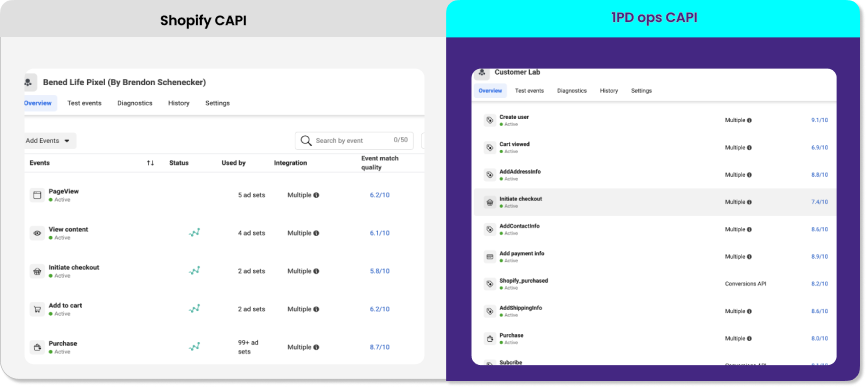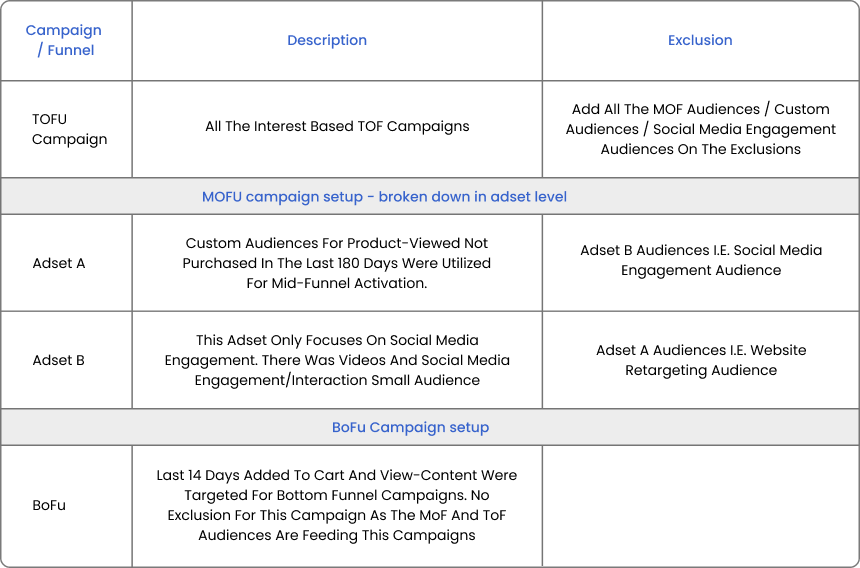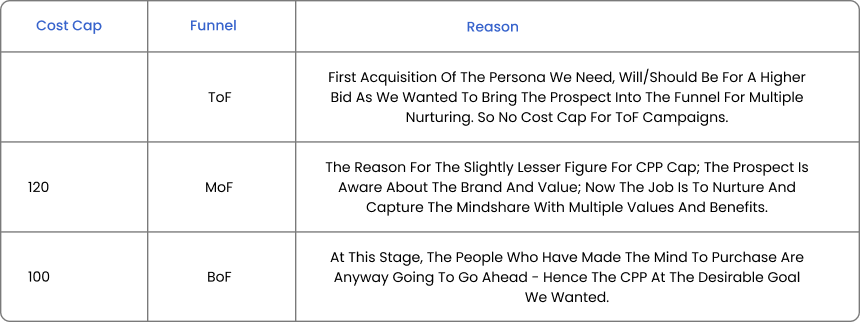Honestly, nothing against Shopify. To build an eCommerce platform, Shopify is of course one of the best. Someday If I start selling peanut butter; I would prefer Shopify.
But does Shopify enable or help performance marketers? That’s the pain.
Let me tell you a kutty story (a short tale) to put the context straight.
One of our customers (healthcare brand) faced a major challenge: reducing their CPP. However, the complexity increased because they had two key products with different price points. Therefore, the goal was to reduce the CPP for each individual product, not just the overall CPP on Meta.
Their expected CPP for each of the products are:
- Product A @ $185 Expected CPP
- Product B @ $115 Expected CPP
What’s the best way to train Meta algorithms?
The ideal way to approach this challenge is to have a custom conversion event for product A and product B and run two different campaigns optimizing for each. This helps to train the Meta algorithm and bring more for specific products.
Unfortunately, most of the marketers, not by choice but due to lack of flexibility, optimize the ad campaigns for Shopify’s default/standard purchase events on Meta.
Interestingly, Meta Algorithms work differently: Event Optimisation ?
Meta’s ad algorithm is a machine learning model. These algorithms need to be trained on what kind of purchasers you need.
And this where we need to highlight the core concept of event optimization.
“Predictions are made for a new data point by searching through the entire training set for the K most similar instances (the neighbors) and summarizing the output variable for those K instances.“
The output variable is typically “purchase”, but it doesn’t offer your control. Marketers need control.
Based on the event the campaign is optimized for, Meta analyzes the user data, and the algorithms estimate potential ROAS and place higher bids on your most valuable customers, thereby maximizing the value and the number of your campaign conversions.
Simply put, if you optimize for purchase events, you get more purchases. Optimize for high AOV purchases, and you achieve that. Optimize for custom conversion events for Product A or Product B, and Meta delivers more of those.
Dear Shopify, we love you but we’re sorry for ditching you…
Shopify default CAPI provides standard events inside the FB pixel, but advanced optimization may prove to be challenging. It’s crucial to train ad algorithms with advanced optimization events beyond targeting.

First-Party Data Ops (1PD) simplified for the performance marketers
Let me break the journey of the customer step by step.
1. Custom conversion event for two separate products:
Reiterating the reasons again:
- Product level optimization to train the algorithm:
Firstly, we need to define the conversion event at product level. So that the Meta ad algorithm learns based on the optimization event. Checkout on how to create custom conversion events.
- Since the goal to attain the CPP was two different products, we need to have two different events and campaigns focussed on each product.

2. The GoldMine – Anonymous audience activation beyond 28 days:
No debate that Meta deprecates the user behavior data of inactive users beyond 28 days.
Enabling/Adopting to First-Party Data Ops helped creating a custom audience beyond 180 days at individual product level.
A quick snapshot of what First-Party Data Sync and Default Facebook Pixel sync custom audience match rate was a game-changer.

3. Exclusion is the key – Restructuring the campaign:
To reduce the CPP, the key is exclusion. Top funnel, mid-funnel and bottom funnel campaigns need to define who we want to target. Because, targeting the repeated audience in all the funnels increases the CPC.
A quick snippet on how to exclude each audiences from each funnel to avoid overlapping and costing.

4. Introduced Cost-Cap in each funnel to control the CPP:
Cost-Cap is the beautiful way to control the campaign and train the algorithm on who we want.
As we are engaging with the prospects at the multiple stages of the buying journey in nurturing , rewarming, win-back campaigns – the cost cap we arrived at was sensible.

Here are the results – First-Party Data Ops impact:
As we have enabled 1P domain tracking for this healthcare brand, we have browser cookies saved in the server forever i.e. all fbclid and gclid are collected and stored forever.
This helps in attribution and will significantly lift the ROAS as well along with the goal of reducing the CPP for individual products.
- Reduced cost per purchase by 54% which was beyond the goal.
- We saw 34% improved ROAS over the last 3 months.


